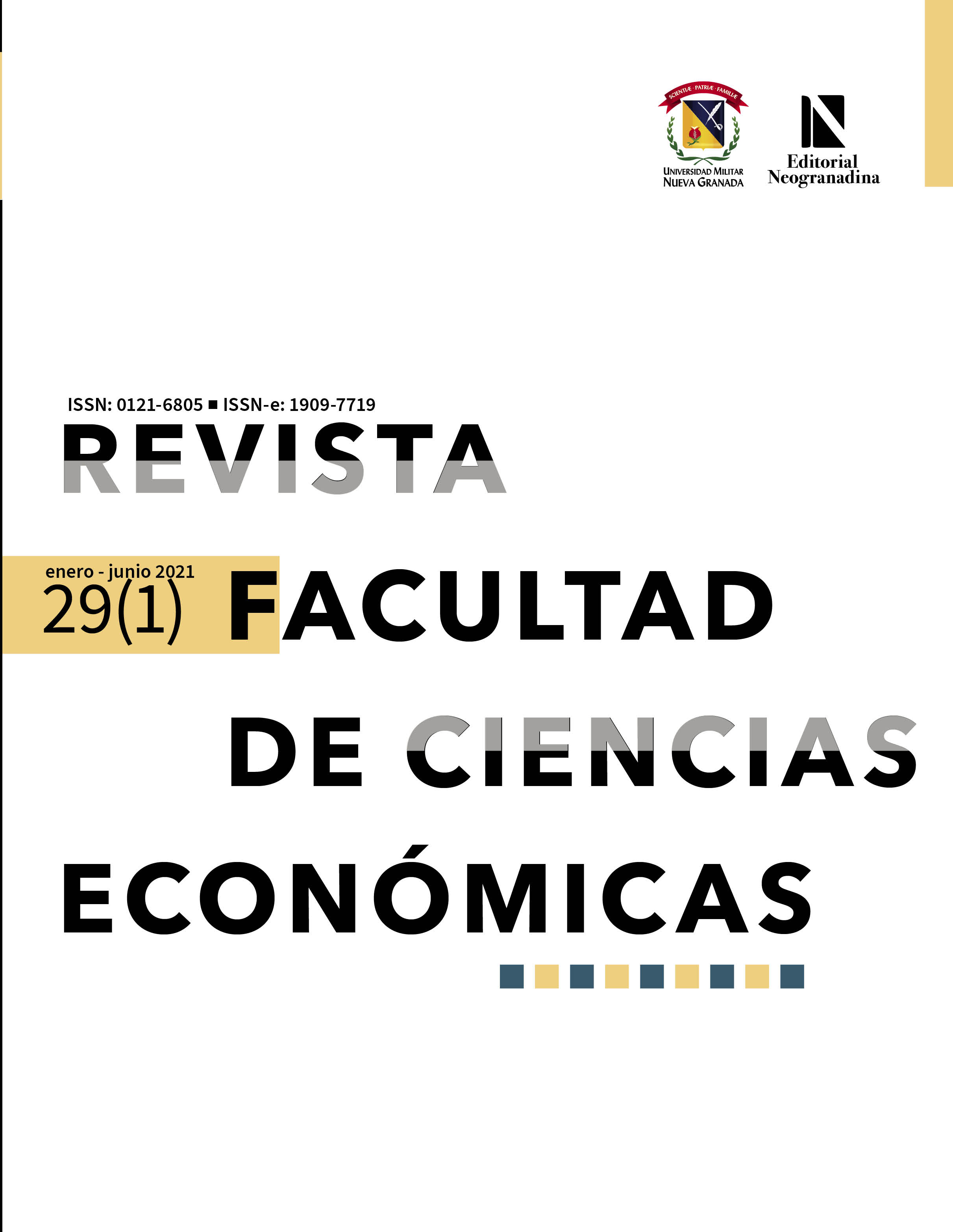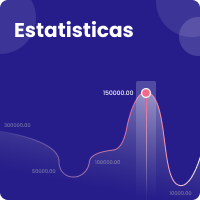A rentabilidade dos serviços de eletricidade, petróleo e gás nas Américas
um enfoque analítico
Resumo
Identificar os determinantes da rentabilidade dos serviços públicos é vital para a tomada de decisões estratégicas, como alocar recursos adequadamente e direcionar a estratégia de negócios para aumentar o capital investido. Analisamos as informações de empresas privadas e públicas dos setores de energia, gás e petróleo na Colômbia e em outros países do continente americano. Construímos um modelo de dados em painel de 2000 a 2010 e sugerimos um método para identificar os determinantes da rentabilidade em grupos homogêneos de empresas por meio de análise de grupos. Usamos análise de regressão para quantificar esses fatores em cada grupo. Os ati- vos fixos são determinantes essenciais da rentabilidade, porém, a regulação de investimentos pode causar perdas significativas no valor realizável dos ativos fixos e um aumento nos custos de capital das empresas. A dívida e um ambiente munificente afetam apenas as empresas de médio porte. Encontramos alguns benefícios para grandes empresas que se originam de ambientes institucionais não transparentes.
Downloads
Referências
Akhtar, S., Benish, J., Atiya, M., & Haleema, S. (2012). Relationship between Financial Leverage and Financial Performance: Evidence from Fuel & Energy Sector of Pakistan. European Journal of Business and Management, 4(11), 7-17.
Aldrich, H. (2008). Organizations and Environments. Stanford University Press.
Amat, O. (2001). Contabilidad y Finanzas. Deusto.
https://doi.org/10.1525/9780520354111
Bandyopadhyay, S. (1994). Market reaction to earnings announcements of successful efforts and full cost firms in the oil and gas industry. The Accounting Review, 69(4), 657-674.
Bastidas Méndez, C. (2007). ebitda, ¿es un indicador financiero contable de agregación de valor? capic Review, 5(4), 41-54.
Baum, R., & Wally, S. (2003). Strategic decision speed and firm performance. Strategic management journal, 24(7), 1107-1129. doi: 10.1002/smj.343
https://doi.org/10.1002/smj.343
Bekaert, G., & Harvey, C. (2003). Emerging Markets Finance. Journal of Empirical Finance, 10(1), 3-55. doi: 10.1016/S0927-5398(02)00054-3
https://doi.org/10.1016/S0927-5398(02)00054-3
Bertsen, M., Skjong Bøe, K., Jordal, T., & Molnár, P. (2018). Determinants of oil and gas investments on the Norwegian Continental Shelf. Energy, 148(1), 904-914. doi: 10.1016/j.energy.2018.01.147
https://doi.org/10.1016/j.energy.2018.01.147
Bitner, L., & Dolan, R. (1996). Assessing the Relationship between Income Smoothing and the Value of the Firm. Quarterly Journal of Business and Economics, 35(1), 16- 35.
Bortolotti, B., Cambini, C., & Rondi, L. (2011). Capital Structure and Regulation: Do Ownership and Regulatory Independence Matter? Journal of Economics & Management Strategy, 20(2), 517-564. doi: 10.1111/j.1530-9134.2011.00296.x
https://doi.org/10.1111/j.1530-9134.2011.00296.x
Boyer, M., & Filion, D. (2007). Common and fundamental factors in stock returns of Canadian oil and gas companies. Energy Economics, 29(3), 428-453. doi: 10.1016/j.eneco.2005.12.003
https://doi.org/10.1016/j.eneco.2005.12.003
Bröker Bone, R. (2019). Determinants of corporate ratings in the oil industry: The Repsol-ypf case. read Revista Eletrônica de Administração, 16(1), 70-90.
Cabrales, S., Bautista, R., & Benavides, J. (2017). A model to assess the impact of employment policy and subsidized domestic fuel prices on national oil companies. Energy Economics, 68, 566-578. doi: 10.1016/j.ene- co.2017.10.038
https://doi.org/10.1016/j.eneco.2017.10.038
Cambini, C., & Rondi, L. (2012). Capital structure and investment in regulated network utilities: evidence from eu telecoms. Industrial and corporate change, 21(1), 73-94. doi: 10.1093/icc/dtr035
https://doi.org/10.1093/icc/dtr035
Capece, G., Di Pillo, F., & Levialdi, N. (2013). The Performance Assessment of Energy Companies. apcbee Procedia, 5, 265-270. doi: 10.1016/j.apcbee.2013.05.046
https://doi.org/10.1016/j.apcbee.2013.05.046
Comin, D., & Phillipon, T. (2006). The rise in firm-level volatility: Causes and consequences. In M. Geltler, & K. Rogof, nber Macroeconomics Annual 2005 (Vol. 20, pp. 167-228). mit Press.
https://doi.org/10.1086/ma.20.3585419
Dayanandan, A., & Donker, H. (2011). Oil prices and accounting profits of oil and gas companies. International Review of Financial Analysis, 20(5), 252-257. doi: 10.1016/j.irfa.2011.05.004
https://doi.org/10.1016/j.irfa.2011.05.004
Delen, D., Kuzey, C., & Uyar, A. (2013, August). Measuring firm performance using financial ratios: A decision tree approach. Expert Systems with Applications, 40(10), 3970-3983. doi: 10.1016/j.eswa.2013.01.012
https://doi.org/10.1016/j.eswa.2013.01.012
Dess, G. G., & Beard, D. W. (1984, March). Dimensions of Organizational Task Environments. Administrative Science Quarterly, 29(1), 52-73. doi: 10.1016/j. eswa.2013.01.012
https://doi.org/10.2307/2393080
Eslava, J. D. (2010). Las claves del análisis económico-financiero de la empresa (2nd ed.). esic Editorial.
Fama, E. F., & French, K. R. (2002, April). The Equity Premium. The Journal of Finance, 57(2), 637-659. doi: 10.1111/1540-6261.00437
https://doi.org/10.1111/1540-6261.00437
Fan, J., Rui, O., & Zhao, M. (2008). Strategic decision speed and firm performance. Journal of Comparative Economics, 36, 343-364. doi: 10.1002/smj.343
https://doi.org/10.1002/smj.343
Frank, M., & Goyal, V. (2009). Capital Structure Decisions: Which Factors Are Reliably Important? Financial Management, 38(1), 1-37. doi: 10.1111/j.1755- 053x.2009.01026.x
https://doi.org/10.1111/j.1755-053X.2009.01026.x
Gordon, M., & McCallum, J. (1972). Valuation and the cost of capital for regulated utilities: comment. The Journal of Finance, 27(5), 1141-1146. doi: 10.1111/j.1540- 6261.1972.tb03031.x
https://doi.org/10.1111/j.1540-6261.1972.tb03031.x
Guerrini, A., Romano, G., & Campedelli, B. (2011). Factors affecting the performance of water utility companies. International Journal of Public Sector Management, 24(6), 543-566. doi: 10.1108/09513551111163657
https://doi.org/10.1108/09513551111163657
Hazarika, I. (2015). Performance analysis of top oil and gas companies worldwide with reference to oil prices. Journal of Energy and Economic Development, 1(1), 62- 78.
Hollas, D., & Stansell, S. (1994, April). The economic efficiency of public vs private gas distribution utilities. Annals of Public and Cooperative Econo- mics, 65(2), 281-300. doi:10.1111/j.1467-8292.1994. tb01515.x
https://doi.org/10.1111/j.1467-8292.1994.tb01515.x
Irina, I., & Nadezhda, Z. (2009). The relationship between corporate governance and company performance in concentrated ownership systems: The case of Germany. Journal of Corporate Finance, 4(12), 34-59. doi: 10.17323/j.jcfr.2073-0438.3.4.2009.34-56
https://doi.org/10.17323/j.jcfr.2073-0438.3.4.2009.34-56
Jensen, M., & Meckling, W. (1976). Theory of the firm: Managerial behavior, agency costs and ownership structure. Journal of Financial Economics, 3(4), 305- 360. doi: 10.1016/0304-405x(76)90026-x
https://doi.org/10.1016/0304-405X(76)90026-X
Jorde, T., Sidak, G., & Teece, D. (2000). Innovation, investment, and unbundling. Yale Journal on Regulation, 17(1), 1-37. doi:10.2139/ssrn.255236
https://doi.org/10.2139/ssrn.255236
Junquera, B., del Brío, J. A., & Fernández, E. (2008). The client as co-manufacturer and environmental entrepreneur: a research agenda. The Service Industries Journal, 28(7), 1029-1040. doi: 10.1080/02642060701846838
https://doi.org/10.1080/02642060701846838
Keil, K. (2017). The Arctic in a Global Energy Picture: International Determinants of Arctic Oil and Gas Development. In K. Keil, & S. Knecht, Governing Arctic Change. Global Perspectives (p. 319). Palgrave Macmillan.
https://doi.org/10.1057/978-1-137-50884-3_14
King, C. W., & Hall, C. A. (2011, October). Relating Financial and Energy Return on Investment. Sustainability, 3(10), 1810-1832. doi: 10.3390/su3101810
https://doi.org/10.3390/su3101810
Lee, J.-D., Park, S.-B., & Kim, T.-Y. (1999). Profit, productivity, and price differential: an international performance comparison of the natural gas transportation industry. Energy Policy, 27, 679-689. doi: 10.1016/ s0301-4215(99)00025-7
https://doi.org/10.1016/S0301-4215(99)00025-7
Leland, H., & Toft, K. (1996). Optimal Capital Structure, Endogenous Bankruptcy, and the Term Structure of Credit Spreads. The Journal of Finance, 51(3), 987-1019. doi: 10.1111/j.1540-6261.1996.tb02714.x
https://doi.org/10.1111/j.1540-6261.1996.tb02714.x
Loudder, M., Khurana, I., & Boatsman, J. (1996). Market Valuation of Regulatory Assets in Public Utility Firms. 71(3), 357-373.
Manzano, O., & Monaldi, F. (2008). The Political Economy of Oil Production in Latin America. Economía, 9(1), 59-103. doi: 10.1353/eco.0.0018
https://doi.org/10.1353/eco.0.0018
Masulis, R., & Trueman, B. (1988). Corporate Investment and Dividend Decisions under Differential Personal Taxation. Journal of Financial and Quantitative Analysis, 23(4), 369-385. doi: 10.2307/2331077
https://doi.org/10.2307/2331077
McConell, J. J., & Servaes, H. (1990, October). Additional evidence on equity ownership and corporate value. Journal of Financial Economics, 27(2), 595-612. doi:10.1016/0304-405x(90)90069-c
https://doi.org/10.1016/0304-405X(90)90069-C
Misund, B., & Osmundsen, P. (2015). The value-relevance of accounting figures in the oil and gas industry: cash flow or accruals? Petroleum Accounting and Financial Management Journal, 34(2), 90-110.
Modi, S. B., & Mishra, S. (2011, March). What drives financial performance-resource efficiency or resource slack?: Evidence from US Based Manufacturing Firms from 1991 to 2006. Journal of Operations Management, 29(3), 254-273. doi; 10.1016/j.jom.2011.01.002
https://doi.org/10.1016/j.jom.2011.01.002
Mohanty, S., & Nandha, M. (2011). Oil risk exposure: The case of the US oil and gas sector. The Financial Review, 46(1), 165-191. doi: 10.1111/j.1540-6288.2010.00295.x
https://doi.org/10.1111/j.1540-6288.2010.00295.x
Murtagh, F., & Lagendre, P. (2014). Ward's hierarchical agglomerative clustering method: which algorithms implement Ward's criterion? Journal of Classification, 31, 274-295. doi: 10.1007/s00357-014-9161-z
https://doi.org/10.1007/s00357-014-9161-z
Neder, Á. E., Valquez, C. S., & Ceballos, C. (2005). Determinants of profitability in the distribution of natural gas in Argentina.
Patterson, C. (1983). The Effects of Leverage on the Revenue Requirements of Public Utilities. Financial Management, 12(3), 29-39.
https://doi.org/10.2307/3665514
Rajan, R., & Zingales, L. (1995). What Do We Know about Capital Structure? Some Evidence from International Data. The Journal of Finance, 50(5), 1421-1460. doi: 10.2307/3665514
https://doi.org/10.2307/3665514
Restrepo, N., Uribe, J., & Manotas, D. (2018). Financial risk network architecture of energy firms. Applied Energy, 215, 630-642. doi: 10.1016/j.apenergy.2018.02.060
https://doi.org/10.1016/j.apenergy.2018.02.060
Restrepo, N., Uribe, J., & Manotas, D. (2020). Dynamic capital structure under changing market conditions in the oil industry: An empirical investigation. Resources Policy, 69, 101808. doi: 10.1016/j.resourpol.2020.101808
https://doi.org/10.1016/j.resourpol.2020.101808
Reynaud, A., & Alban, T. (2013, March). Firm's profitability and regulation in water and network industries: An empirical analysis. Utilities Policy, 24, 48-58. doi: 10.1016/j.jup.2012.07.002
https://doi.org/10.1016/j.jup.2012.07.002
Rhoades, D. L., Rechner, P. L., & Sundaramurthy, C. (2001, October). A Meta-analysis of Board Directorship Structure and Financial Performance: Are "Two Heads Better Than One"? Corporate Governance: An International Review, 9(4), 311-319. doi: 10.1111/1467- 8683.00258
https://doi.org/10.1111/1467-8683.00258
Roberts, B., Maddala, G., & Enholm, G. (1978). Determinants of the Requested Rate of Return and the Rate of Return Granted in a Formal Regulatory Pro- cess. The Bell Journal of Economics, 9(2), 611-621. doi: 10.2307/3003601
https://doi.org/10.2307/3003601
Romero, A., Rayo Cantón, S., & Lara Rubio, J. (2011). Un Modelo Explicativo-Predictivo de la Rentabilidad Financiera de las Empresas en los Principales Sectores Económicos Españoles. XVI Congreso aeca. Granada.
Sandoval, E. (2001). Financial Performance Measures And Shareholder Value Creation: An Empirical StudyFor Chilean Companies. Journal of Applied Business Research (jabr) , 17(3), 109-122. doi: 10.19030/jabr. v17i3.2239
https://doi.org/10.19030/jabr.v17i3.2239
Seunghyun, H. (2017, June). Oil Price Volatility, an Economic Determinant of Earnings Volatility - Empirical Analysis on Earnings Volatility of U.S. Oil and Gas Companies Between 1986-2016 [Master's thesis, Aalto University Learning Centre]. Aaltodoc. https://aalto- doc.aalto.fi/handle/123456789/27795
Sutcliffe, K. M. (1994, October). What Executives Notice: Accurate Perceptions in Top Management Teams. Academy of Management Journal, 37(5), 1360-1378. doi: 10.5465/256677
https://doi.org/10.5465/256677
Wall, T., Michie, J., Paterson, M., Wood, S., Sheehan, M., Clegg, C., & West, M. (2004). On the validity of subjetive measures of company performance. Personnel Psychology, 57, 95-118. doi: 10.1111/j.1744-6570.2004. tb02485.x
https://doi.org/10.1111/j.1744-6570.2004.tb02485.x
Ward, J. H. (1963). Hierarchical Grouping to Optimize an Objective Function. Hierarchical grouping to optimize an objective function, 58(301), 236-244. doi: 10.1080/01621459.1963.10500845











